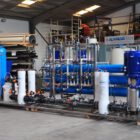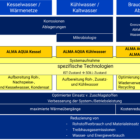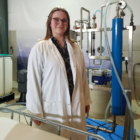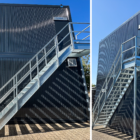A qualified sample is a systematically and professionally taken water or wastewater sample that is representative of the chemical, physical and biological properties of the analyzed medium. The term is used in water technology, industrial wastewater treatment and process control, as the quality of the analysis and the measures derived from it depend directly on the sampling. A qualified sample is essential for compliance with legal requirements, process control and the evaluation of operational and environmental parameters.
Table of contents
Basics and objectives
The qualified sample is used to obtain meaningful and reliable data on the composition and quality of water or wastewater. It is required for
Monitoring of water quality:
- Ensuring compliance with legal limits (e.g. Drinking Water Ordinance, Wastewater Ordinance).
- Checking process and cooling water for pollutants, corrosion and scaling potential.
Process optimization:
- Checking the effectiveness of water treatment systems, e.g. filter and membrane systems, chemical precipitation.
- Adaptation of operating resources such as flocculants, biocides or antiscalants.
Environmental monitoring:
- Assessment of the impact of wastewater discharges on surface waters.
- Proof of compliance with discharge limits.
Legal certainty:
- Documentation of operating conditions and proof of compliance with legal regulations.
Technical background to sampling
A qualified sample requires professional planning, sampling, handling and storage in order to ensure representative and unbiased results.
1. representativeness
The sample must reflect the actual composition of the medium. Factors such as flow behavior, homogeneity and seasonal fluctuations must be taken into account.
2. sampling strategies
Single sample:
- One-time removal at a specific place and time.
- Suitable for momentary condition analyses, e.g. to check for acute pollution.
Mixed sample:
- Composition of several subsamples taken over a certain period of time or at different locations.
- Represents average values, e.g. for continuously varying wastewater flows.
Time-proportional sample:
- Sampling at fixed time intervals.
- Application: Monitoring of processes with time-dependent fluctuations, e.g. batch processes.
Sample proportional to quantity:
- Sampling proportional to the flow rate.
- Application: Representative samples with strongly varying wastewater flows.
Requirements for the qualified sample
The quality of a sample depends on the professional execution and the equipment used. The following requirements apply:
1. equipment for sampling
Manual sampling:
- Use of scoops, sample collectors or bottles.
- Suitable for spot sampling in hard-to-reach areas.
Automatic samplers:
- Devices for continuous or time-controlled sampling.
- Application in wastewater treatment plants, industrial wastewater treatment plants or for environmental monitoring.
- Advantages: Precision, reproducibility and time savings.
2. containers and preservation
Sample container:
- Material: Glass or plastic, depending on the type of analysis (e.g. inert to organic compounds or heavy metals).
- Sterility: Sterile containers are required for microbiological examinations.
Conservation:
- Cooling (4 °C): Prevents microbial degradation and chemical reactions.
- Addition of chemicals: e.g. acids to stabilize metals or fix ammonium nitrogen.
3. documentation
- Parameters:
- Sampling time, location and method.
- Information on flow rate, temperature and pH value.
- Traceability:
- Complete documentation for quality assurance and legal purposes.
Sources of error in sampling
Unqualified sampling can falsify the analysis results and lead to incorrect decisions. Typical sources of error are
Insufficient representativeness:
- Incorrect selection of the sampling location or time.
- Inadequate homogenization of mixed samples.
Contamination:
- Contamination of the sample due to unclean equipment or containers.
Incorrect storage:
- Temperature deviations or delays in the analysis lead to chemical changes.
Lack of conservation:
- Degradation of sensitive parameters such as COD, ammonium or sulphide.
Advantages of a qualified sample
Reliability:
- Ensuring correct analysis results through representative sampling.
Legal certainty:
- Documented evidence of compliance with legal requirements.
Process optimization:
- Support with the adjustment of operating parameters and the use of chemicals.
Cost reduction:
- Avoidance of penalties and unnecessary chemical consumption through precise data.
Conclusion
Qualified sampling is a central component of water and wastewater treatment, as it forms the basis for all analytical and operational decisions. Professional implementation requires know-how, suitable equipment and strict adherence to standards. By using modern samplers, well-founded documentation and precise analyses, processes can be optimized, legal requirements complied with and the environment sustainably protected.
For further information on our products, please feel free to contact us at any time!








